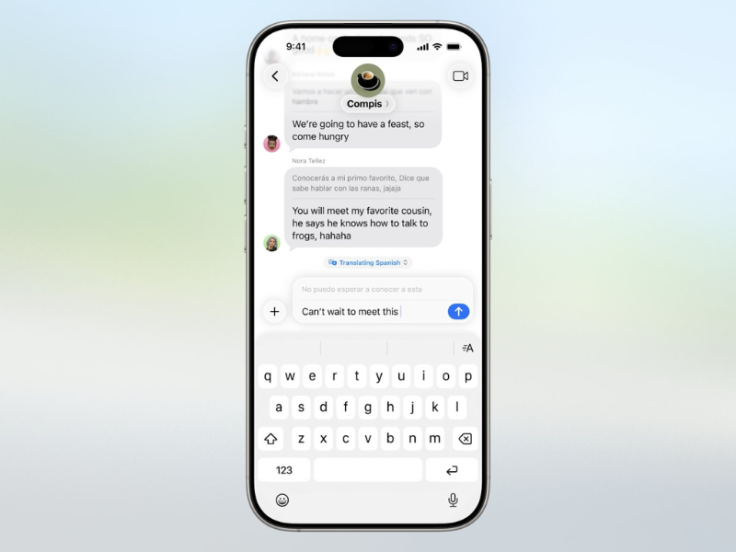Apple Wows with Translation Tool and Redesign, but AI Breakthrough Lags
Available in languages like English, French, German, Portuguese, and Spanish, it also extends to AirPods for live conversation translation.

Apple's Worldwide Developers Conference 2025, which concluded on Monday, delivered a comprehensive software redesign dubbed 'Liquid Glass' alongside powerful new translation features integrated across iOS 26, iPadOS 26, and other Apple platforms.
The Cupertino tech giant unified its operating system numbering to reflect the 2025-2026 release cycle, marking a strategic shift in its software naming convention.
Yet, despite these strides, Apple's broader AI ambitions, particularly around its Apple Intelligence platform, left analysts and investors wanting more, as competitors like Google and Microsoft continue to surge ahead in the AI race.
Drawing from insights shared at the WWDC on 9 June 2025 and supplemented by industry analysis, here's how Apple is navigating its tech evolution.
Embrace Seamless Translation Across Devices

Apple's new live translation feature, integrated into iOS 26, iPadOS 26, and select Apple Watches, stole the spotlight.
Powered by on-device AI models, this tool enables real-time translation for calls, texts, and FaceTime, complete with spoken AI voice and written captions.
According to a Wall Street Journal report, the feature even mimics the speaker's voice in the translated language, a feat that promises to revolutionise multilingual communication.
Available in languages like English, French, German, Portuguese, and Spanish, it also extends to AirPods for live conversation translation, automatically detecting spoken languages.
This move positions Apple to compete with Google's Live Translate and Meta's messaging translation tools, enhancing user experience for global travellers and multilingual users.
Redefine User Experience with Liquid Glass
Apple's 'Liquid Glass' redesign, rolled out across iOS 26, macOS 26, and other operating systems, marks its most significant visual overhaul since 2013.
Inspired by the Vision Pro's aesthetic, this design introduces partially transparent icons and menus, creating a unified, futuristic look across iPhones, iPads, and Macs.
As noted by Reuters, the redesign leverages Apple's advanced M-series chips to enable this sleek interface. The company also shifted its naming convention to year-based labels (e.g., iOS 26 for 2026), simplifying its fragmented OS numbering.
This cohesive design, paired with features like customisable lock screens and a new Games app, aims to boost user engagement and ecosystem loyalty, though some X posts suggest mixed reactions, with fans praising the aesthetics but others craving more AI innovation.
Empower Developers with AI Tools
Apple's focus on developers was evident, as it opened access to its on-device Apple Intelligence tools, allowing third-party developers to integrate features like Genmoji and Writing Tools into their apps.
CNBC reports that this move could spur app innovation, potentially driving sales of Apple Intelligence-compatible devices like the iPhone 16.
However, the absence of a major Siri upgrade or a cloud-based AI breakthrough disappointed some analysts, who noted that Apple's on-device AI approach, while privacy-focused, lags behind competitors' generative models.
With rivals like OpenAI and Google advancing rapidly, Apple's modest AI updates risk falling short of investor expectations, potentially impacting its £2.4 trillion ($3.2 trillion) market valuation.
Apple's AI Race Needs a Sprint
Despite the comprehensive updates, industry analysts note Apple's measured approach to generative AI compared to competitors' more aggressive strategies. The company's focus on on-device processing prioritises user privacy but potentially limits certain AI capabilities compared to cloud-based alternatives from rivals.
The announcements come at a crucial time as Apple navigates intensifying competition in artificial intelligence, whilst maintaining its premium market position.
The unified design language and enhanced translation capabilities represent Apple's strategy to differentiate through seamless user experience rather than purely technological advancement.
Apple's WWDC 2025 delivers meaningful improvements to daily device interaction through sophisticated design evolution and practical AI implementation, positioning the company for sustained ecosystem growth whilst addressing real-world communication barriers for global users.
© Copyright IBTimes 2025. All rights reserved.





















